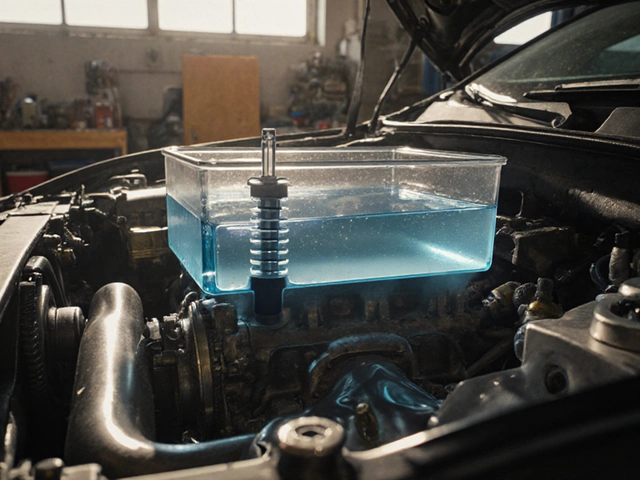Keeping the air in your home fresh and clean isn't just about aesthetics; it's crucial for your health and comfort. Ever wonder how often that air filter humming away in your basement or utility closet needs a refresh? Well, it really depends on a few things, like what kind of filter you have and what's going on inside your house.
Most folks don't realize that skimping on filter changes can lead to a dusty home and even wear out your HVAC system faster. Typically, a good rule of thumb is to check your filter every month and replace it at least every three months. But, if you've got pets, allergies, or live in an area with high pollution, you might be looking at every 30 to 60 days.
Imagine having a home renovation—suddenly there's more dust than usual. That's your cue to peek at that filter more often. Staying on top of this not only helps with the airflow but also cuts down the sneezing and coughing. Keep reading, and we'll break down all these aspects so you can keep your house breathing easy.
- Understanding Air Filter Basics
- Why Replacement Matters
- Factors Affecting Replacement Frequency
- Signs It's Time to Change Your Filter
- Tips for Choosing the Right Filter
Understanding Air Filter Basics
Air filters are like the unsung heroes of your home, taking on the challenge of trapping dust, dirt, and even microscopic pollutants that float around. You're not just filtering air; you're safeguarding your home environment and your health. They're located in your HVAC system but have a kind of secret mission to make sure air circulating through your house is as clean as a whistle.
Most filters are made of pleated paper or cloth fibers and come with a MERV rating, which stands for Minimum Efficiency Reporting Value. This rating shows how well a filter captures particles - the higher the number, the better it is. For essential home use, a MERV rating between 8 and 11 usually does the trick. But if anyone in the house has allergies or if you're really serious about indoor air quality, you might go for a higher rating.
There are different types of filters you might come across. You've got whole house filters, meant to handle big jobs and cover your entire home setup. There are HEPA filters, known for their efficiency in tackling the tiniest of particles, which are super handy if someone's got allergies. Carbon filters are also there in case you're dealing with odors or smoke, thanks to their ability to absorb gases.
Now, here’s something to think about: Although air filters are pretty affordable, the cost can add up if you're not timing your replacements right. Not changing your filter can have it working overtime, which could hike up your energy bill or even damage your HVAC system over time. Setting up a schedule for checking and replacing filters can save you from unexpected repair costs and keep your air flowing right.
For those who love a good stat, here's a quick table showing common household air filter types and their typical MERV ratings:
| Filter Type | Typical MERV Range |
|---|---|
| Disposable Fiberglass | 1-4 |
| Disposable Pleated | 5-8 |
| High-efficiency Pleated | 9-13 |
| HEPA | 17-20 |
Understanding the basics can set you up for success in maintaining that sweet, breathable air inside your pad. It's not rocket science, but knowing the details can make all the difference.
Why Replacement Matters
Switching out your air filters in a timely fashion isn’t just something homeowners should do out of habit—it's vital for a host of reasons. First and foremost, think about the air quality you're breathing. A clogged filter doesn't catch dust, pollen, and other irritants effectively. So, if you or your family have allergies or asthma, replacing that filter can bring noticeable relief.
But it's not just about cleaner air. Neglecting to replace the filter can crank up energy consumption. A clogged filter forces your HVAC system to work harder, pushing to circulate air through a blockage. This not only spikes your energy bills but can also cause wear and tear, potentially leading to costly repairs down the line.
Let's not forget about the lifespan of your HVAC system. No one wants to fork out cash for a new system sooner than necessary. Regularly swapping filters helps prevent undue strain, extending the life of your unit. It's a simple and relatively low-cost measure that can save a heap of trouble later.
Plus, consider the savings on overall home maintenance. With a new filter, you're reducing the grime that gets on furniture, electronics, and every nook and cranny. Less cleaning means more time for yourself and less money on cleaning supplies. So, by regularly changing your whole house filter, you're not just improving air quality; you're optimizing your home's performance and your wallet's health too.

Factors Affecting Replacement Frequency
When it comes to replacing your air filter, timing really matters. A one-size-fits-all approach doesn’t work because your personal need could be quite different from someone down the street. Here’s what influences how often you need to swap out that filter.
Filter Type: The type of filter you have is a big deal. Basic fiberglass filters, while easy on the wallet, generally need replacing every 30 days. Pleated filters are a step up and might last anywhere from 3 to 6 months. If you've got a high-end HEPA or some newfangled filter, those can keep going even longer with monthly checks.
Household Environment: Got pets? Those fluffy buddies bring in dander, which clogs up your filter faster. Same goes if you've got a smoker in the house. If you or someone in the family has allergies, more frequent changes can help keep that sneezing and itching at bay.
Local Air Quality: Living in the city vs. the country can make a huge difference. Urban areas typically have more pollution, meaning your filter has to work harder to keep your air clean. So if you stroll your dog through smog downtown, keep an eye on that filter.
House Size and Usage: Bigger homes with larger square footage make your HVAC system hustle to push that air around. The more your system runs, the quicker the filter gets dirty. Frequent HVAC use also racks up the need for replacement.
| Factor | Suggested Replacement |
|---|---|
| Pets | Every 60 days |
| Allergies | Every 30-60 days |
| Urban Pollution | Every 60-90 days |
| Basic Filter Type | Every 30 days |
By understanding these factors, you can make informed decisions about your home maintenance and ensure you're replacing that whole house filter just when you need to. This isn't just about air quality—it's about keeping your HVAC system super efficient, saving you bucks on long-term repair costs.
Signs It's Time to Change Your Filter
Knowing when to swap out that air filter isn't always obvious, but there are a few telltale signs to watch for. Ignoring these can mean stuffy air or even a hike in those energy bills. Not fun, right? Let's avoid that mess by catching the signs early.
If your home suddenly feels dustier than grandma's attic, it's a major hint that your filter's clogged. Less dusty surfaces mean a filter that's still doing its job catching the sneaky dust bunnies before they settle. The more dust you notice, the less effective your filter probably is.
Ever stand next to a vent and feel barely a whisper of airflow? That's another red flag. Weak airflow usually means the filter is overstuffed with dust and grime, making your HVAC work overtime to puff out the air. It's like trying to blow through a straw that's nearly blocked.
Allergies going nuts all of a sudden? That's your body giving you the rundown that your current filter might be letting allergens slip through the cracks. If sneezes are on the rise and pollen hasn’t spiked, it's probably time to head to your filter and check it out.
One more tip—check for funny smells circulating through your house. A musty or stale air vibe is often a hint that the filter's past its prime, and getting it changed is a good step.
Let's not wait until the air feels like a hazy day in L.A. Keep these signs in your pocket for a quick reminder. Your home's air quality and your sanity will thank you!

Tips for Choosing the Right Filter
When it comes to picking the perfect air filter for your home, it’s not as simple as grabbing the first one you see. You want to ensure it fits not just your HVAC system, but also your lifestyle needs, especially if you're looking to prolong its life and keep those pesky allergies at bay. Let’s cut through the clutter so you can make an informed decision.
First up, check your system’s specifications. Your HVAC manual will usually tell you the size needed for your whole house filter, so start there. Getting the wrong size can be like wearing shoes that are too tight—not comfortable or effective.
Next, consider the MERV rating, which stands for Minimum Efficiency Reporting Value. This rating measures how well the filter captures particles. Most homes do well with a MERV rating between 8 and 13. MERV 8 will snag typical dust and pollen, while MERV 13 will catch smaller things like smoke or bacteria—handy if someone in your house has respiratory issues.
Now, let’s talk about materials. Filters can be fiberglass, pleated, washable, or even electrostatic. Fiberglass is cheaper but needs more frequent changes. Pleated filters do a better job at snagging particles, and they last longer. Washable filters can save money in the long run, but they require regular maintenance. Think about your time and commitment before opting for a washable one.
- If you have furry friends roaming around, invest in a filter that’s specifically designed for pet hair and dander. It’ll help keep things fresh and fur-free.
- Live in a high-pollen area? Go for a higher MERV rating to combat seasonal bouts of sniffles and sneezes.
One more thing—don't forget about brand quality. Some off-brand filters might be tempting, price-wise, but they may not offer the same particle-trapping efficiency. Sometimes shelling out a few extra bucks now saves repair bills later.
A bit confused by all this filter talk? Check this simple comparison chart that lays out the key differences:
| Filter Type | Pros | Cons |
|---|---|---|
| Fiberglass | Cheapest, easy to find | Least effective, short lifespan |
| Pleated | Better efficiency, longer life | Higher cost |
| Washable | Eco-friendly, lower cost over time | Requires regular cleaning, lower initial efficiency |
| Electrostatic | Customizable size, captures small particles | Higher upfront cost |
Picking the right air filter might feel like a chore, but getting the details right will pay off with cleaner air and fewer maintenance headaches down the road. Happy filtering!




